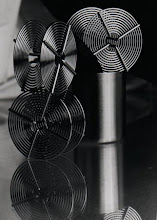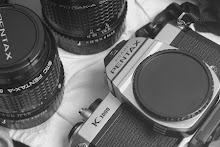AgXphoto.info
Coming up this Sunday and Monday, the return to Cable TV Channel 165 (Sundance) of Werner Herzog's Encounters at the End of the World, about the Antarctic. We saw this one about a year ago in theaters. Clearly a good one for the big screen; you might want to catch it for recording.
If you get into Herzog, or haven't heard of him, I first caught him in two independent films, Werner Herzog Eats His Shoe (required watching at some point in life). The movie is about a college bet that Herzog loses, requiring him to eat his shoe.
Also good is La Soufrière a documentary about a volcano about to erupt, and those who refuse to leave the area.
Herzog has been doing bigger and bigger projects; the latest with some "name" stars, but his best work seems to be when he tells a documentary story all alone.
On that note, I'm willing to give Disney's "Oceans" a chance. We'll see how it does. I'm hoping it'll be a movie that uses color well.
For those that don't need color, but which were shot in it anyway, I'd have to list the here-and-gone The Last Station, a story about the final days of Leo Tolstoy. An excellent film, which should probably get Kelly Condon (Masha) and Christopher Plummer (Tolstoy) awards for something. Required watching for those of you who've read War and Peace. If you haven't read it, put it on the list.
The White Ribbon, because it's the only movie I've seen in town which was followed by someone in a row behind me calling out about the end, "That sucks!"
The White Ribbon didn't suck. It was a good German film in black and white, and it doesn't come with the usual cowboy round 'em up to justice ending because just about everyone in the entire town is guilty of at least one of the seven deadly sins.
I love black and white films, and still remember a little bit of my German. The White Ribbon was the best morality movie about the seven deadly sins I've seen since "Se7en" with Brad Pitt and Morgan Freeman.
Coming up this Sunday and Monday, the return to Cable TV Channel 165 (Sundance) of Werner Herzog's Encounters at the End of the World, about the Antarctic. We saw this one about a year ago in theaters. Clearly a good one for the big screen; you might want to catch it for recording.
If you get into Herzog, or haven't heard of him, I first caught him in two independent films, Werner Herzog Eats His Shoe (required watching at some point in life). The movie is about a college bet that Herzog loses, requiring him to eat his shoe.
Also good is La Soufrière a documentary about a volcano about to erupt, and those who refuse to leave the area.
Herzog has been doing bigger and bigger projects; the latest with some "name" stars, but his best work seems to be when he tells a documentary story all alone.
On that note, I'm willing to give Disney's "Oceans" a chance. We'll see how it does. I'm hoping it'll be a movie that uses color well.
For those that don't need color, but which were shot in it anyway, I'd have to list the here-and-gone The Last Station, a story about the final days of Leo Tolstoy. An excellent film, which should probably get Kelly Condon (Masha) and Christopher Plummer (Tolstoy) awards for something. Required watching for those of you who've read War and Peace. If you haven't read it, put it on the list.
The White Ribbon, because it's the only movie I've seen in town which was followed by someone in a row behind me calling out about the end, "That sucks!"
The White Ribbon didn't suck. It was a good German film in black and white, and it doesn't come with the usual cowboy round 'em up to justice ending because just about everyone in the entire town is guilty of at least one of the seven deadly sins.
I love black and white films, and still remember a little bit of my German. The White Ribbon was the best morality movie about the seven deadly sins I've seen since "Se7en" with Brad Pitt and Morgan Freeman.
In an interesting coincidence, like Se7en, The White Ribbon's end credits look like a class in how to get credits done. Se7en's credits were played using an interesting device of cycling them from top to bottom; but The White Ribbon's credits are notable for their content and organization. The same for the movie posters.
The White Ribbon's crediting looks like what we expect from how it should be done. At least I thought so, when I had a look at what they did.
Interestingly, IMDB lists the film stock types for The White Ribbon as Kodak's latest color negative types in 35mm, but the film is in black and white. If it was a digital conversion, then they fooled me. I would have called it as Kodak Movie Plus-X or Tri-X, which is what I like to use in my old 16mm.
The White Ribbon runs locally until for a little bit.
To get yourself back up to speed on black and white movies, you can't miss the classic, the original, George Romero's Night of the Living Dead. It's in the public domain, and available for internet download.
One film, which I chose to see twice in the same day, was The Art of the Steal about the Barnes collection out of Pennsylvania. The film clearly has a propaganda slant vilifying the Pew Charitable Trusts, but it vilifies them so well that the movie is worth seeing. Billed as a documentary, like Michael Moore films, this one's a propaganda piece for those of us not afraid to admit we like some persuading every now and then.
We get to see the face of Van Gogh's Postman. Considering that the post man was famously Van Gogh's only friend in that one village, it's worth see the movie just for that.
"[This review] will never be moved.
It will never be sold . . . "
Charlie Roses' interviews have brought two more films and filmmakers to our attention.
I don't know when or if either of these are coming to town, but you may not want to wait for them to.
The first is any documentary film by a man named Frederick Wiseman. Wiseman does cinema verite, which is what Reality TV has failed to be. Unlike the Reality shows of our time, Wiseman's films are interesting, educating, revealing, and flat out good movies. 15 minutes of his stuff pretty much smokes all of Fox's Reality Channel nonsense, along with their Big Three Broadcaster cohorts.
Try either Basic Training (1971) or Near Death (1989). I recommend these two solely because I was able to see two very short clips from those films; they're both in black and white; and, like many of Wiseman's films, they deal with institutions and matters of society.
Wiseman's films look like they could do well for their audience's chosen at random; but, it's also clear from his camera work that the films in silver are working out better than the ones that he bothered to record in color.
Finally, The Girl with the Dragon Tattoo. Solely because this one will be the La Femme Nikita of 2010. I'm talking about the movie, not the cable series. This one will be good.
Catch 'em all. They're better than anything on broadcast TV besides PBS.
One film, which I chose to see twice in the same day, was The Art of the Steal about the Barnes collection out of Pennsylvania. The film clearly has a propaganda slant vilifying the Pew Charitable Trusts, but it vilifies them so well that the movie is worth seeing. Billed as a documentary, like Michael Moore films, this one's a propaganda piece for those of us not afraid to admit we like some persuading every now and then.
We get to see the face of Van Gogh's Postman. Considering that the post man was famously Van Gogh's only friend in that one village, it's worth see the movie just for that.
"[This review] will never be moved.
It will never be sold . . . "
Charlie Roses' interviews have brought two more films and filmmakers to our attention.
I don't know when or if either of these are coming to town, but you may not want to wait for them to.
The first is any documentary film by a man named Frederick Wiseman. Wiseman does cinema verite, which is what Reality TV has failed to be. Unlike the Reality shows of our time, Wiseman's films are interesting, educating, revealing, and flat out good movies. 15 minutes of his stuff pretty much smokes all of Fox's Reality Channel nonsense, along with their Big Three Broadcaster cohorts.
Try either Basic Training (1971) or Near Death (1989). I recommend these two solely because I was able to see two very short clips from those films; they're both in black and white; and, like many of Wiseman's films, they deal with institutions and matters of society.
Wiseman's films look like they could do well for their audience's chosen at random; but, it's also clear from his camera work that the films in silver are working out better than the ones that he bothered to record in color.
Finally, The Girl with the Dragon Tattoo. Solely because this one will be the La Femme Nikita of 2010. I'm talking about the movie, not the cable series. This one will be good.
Catch 'em all. They're better than anything on broadcast TV besides PBS.
# # #






No comments:
Post a Comment